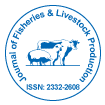Notre groupe organise plus de 3 000 séries de conférences Événements chaque année aux États-Unis, en Europe et en Europe. Asie avec le soutien de 1 000 autres Sociétés scientifiques et publie plus de 700 Open Access Revues qui contiennent plus de 50 000 personnalités éminentes, des scientifiques réputés en tant que membres du comité de rédaction.
Les revues en libre accès gagnent plus de lecteurs et de citations
700 revues et 15 000 000 de lecteurs Chaque revue attire plus de 25 000 lecteurs
Indexé dans
- Index Copernic
- Google Scholar
- Sherpa Roméo
- Ouvrir la porte J
- Clés académiques
- Bibliothèque de revues électroniques
- Recherche de référence
- Répertoire d’indexation des revues de recherche (DRJI)
- Université Hamdard
- EBSCO AZ
- OCLC-WorldCat
- Direction des chercheurs
- Catalogue en ligne SWB
- Bibliothèque virtuelle de biologie (vifabio)
- Publons
- Euro Pub
- Université de Cardiff
Liens utiles
Revues en libre accès
Partager cette page
Abstrait
Fish Fauna of Narayani River, Nepal: Species diversity and Threats.
Gair P, Regmi S
Aquatic biodiversity is in crisis due to several natural and anthropogenic factors. This study was conducted to find out the species diversity and to identify threats to the fish fauna in Narayani River system, Nepal. Both primary and secondary data collection methods were used in the study. Primary data was collected by reconnaissance survey and field monitoring and secondary data were collected from literature review from research reports, journal articles and books, records from Department of National Park and Wildlife Conservation (DNPWC), Chitwan National Park (CNP), National Trust for Nature Conservation (NTNC) and other stakeholders and from relevant websites. Various sampling sites were chosen based on availability of water resources, stakeholder consultation and the habitat preference of the fish species in that river system. Catch and release method was used in field to account the species diversity of fish. Ten orders of fish i.e. Clupeiformes, Cypriniformes, Siluriformes, Angujilliformes, Beloniformes, Ophiocephaliforms, Synbranciformes, Perciformes, Mastacembeliformes, Tetrodontiformes were found in the area. Under these ten orders, 25 families and 86 species were identified. Among the orders, Cypriniformes had the highest number of species while in families; Cyprinidae had the highest number of species (41%) out of total 25 families. Both natural threats (silt deposition, flooding) and anthropogenic threats (illegal fishing, construction of dam/bridge, waste dumping and poisoning to fish) to fish were found in the study sites. It is suggested to construct appropriate ladder during dam construction, stop dumping in the river and further study on fish diversity and threats to fish.
Revues par sujet
- Agriculture et Aquaculture
- Biochimie
- Chimie
- Food & Nutrition
- Génétique et biologie moléculaire
- Géologie et sciences de la Terre
- Immunologie et microbiologie
- Ingénierie
- La science des matériaux
- Le physique
- Science générale
- Sciences cliniques
- Sciences environnementales
- Sciences médicales
- Sciences pharmaceutiques
- Sciences sociales et politiques
- Sciences vétérinaires
- Soins infirmiers et soins de santé
Revues cliniques et médicales
- Allaitement
- Anesthésiologie
- Biologie moléculaire
- Cardiologie
- Chirurgie
- Dentisterie
- Dermatologie
- Diabète et endocrinologie
- Gastro-entérologie
- Immunologie
- La génétique
- Maladies infectieuses
- Médecine
- Microbiologie
- Neurologie
- Oncologie
- Ophtalmologie
- Pédiatrie
- Recherche clinique
- Soins de santé
- Toxicologie

 English
English  Spanish
Spanish  Chinese
Chinese  Russian
Russian  German
German  Japanese
Japanese  Portuguese
Portuguese  Hindi
Hindi